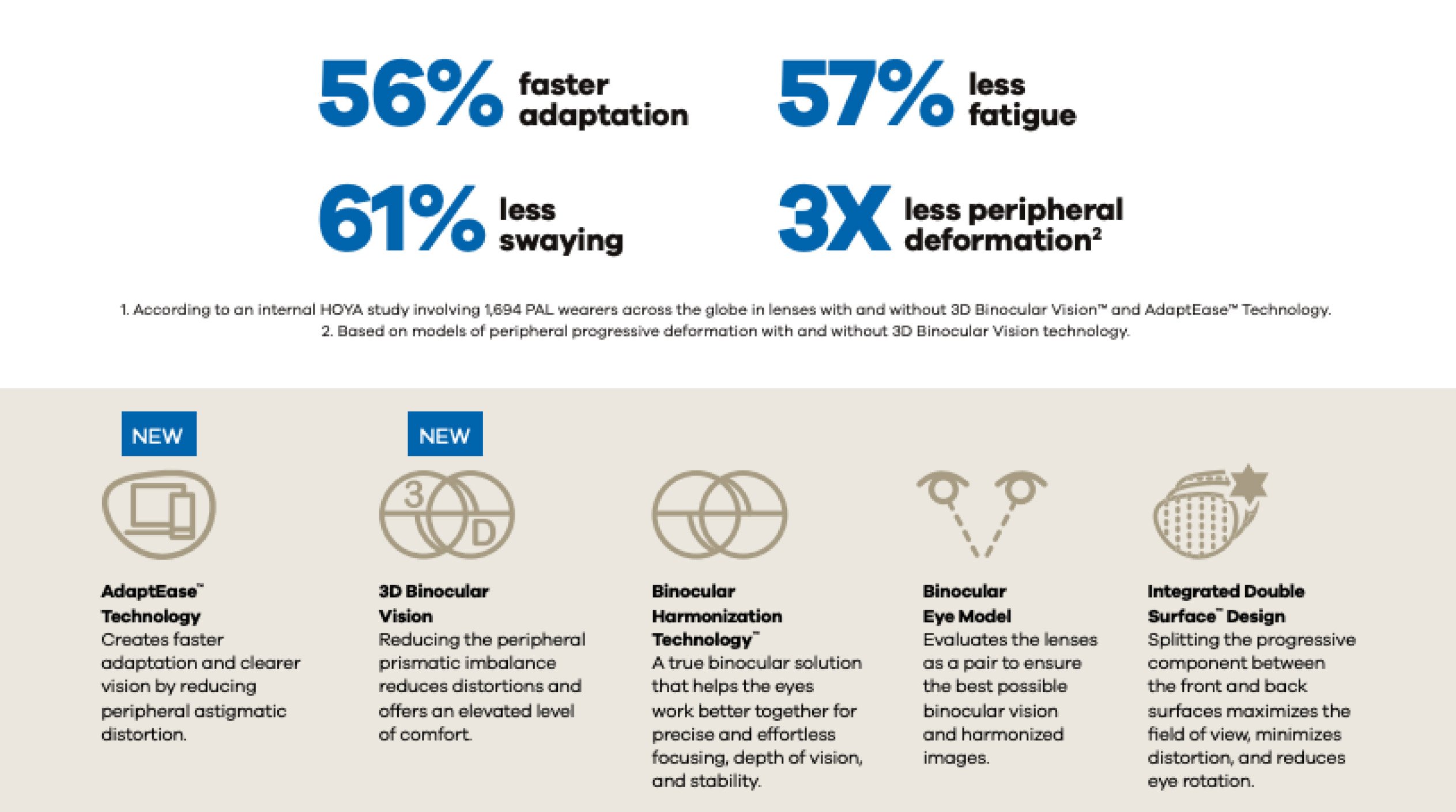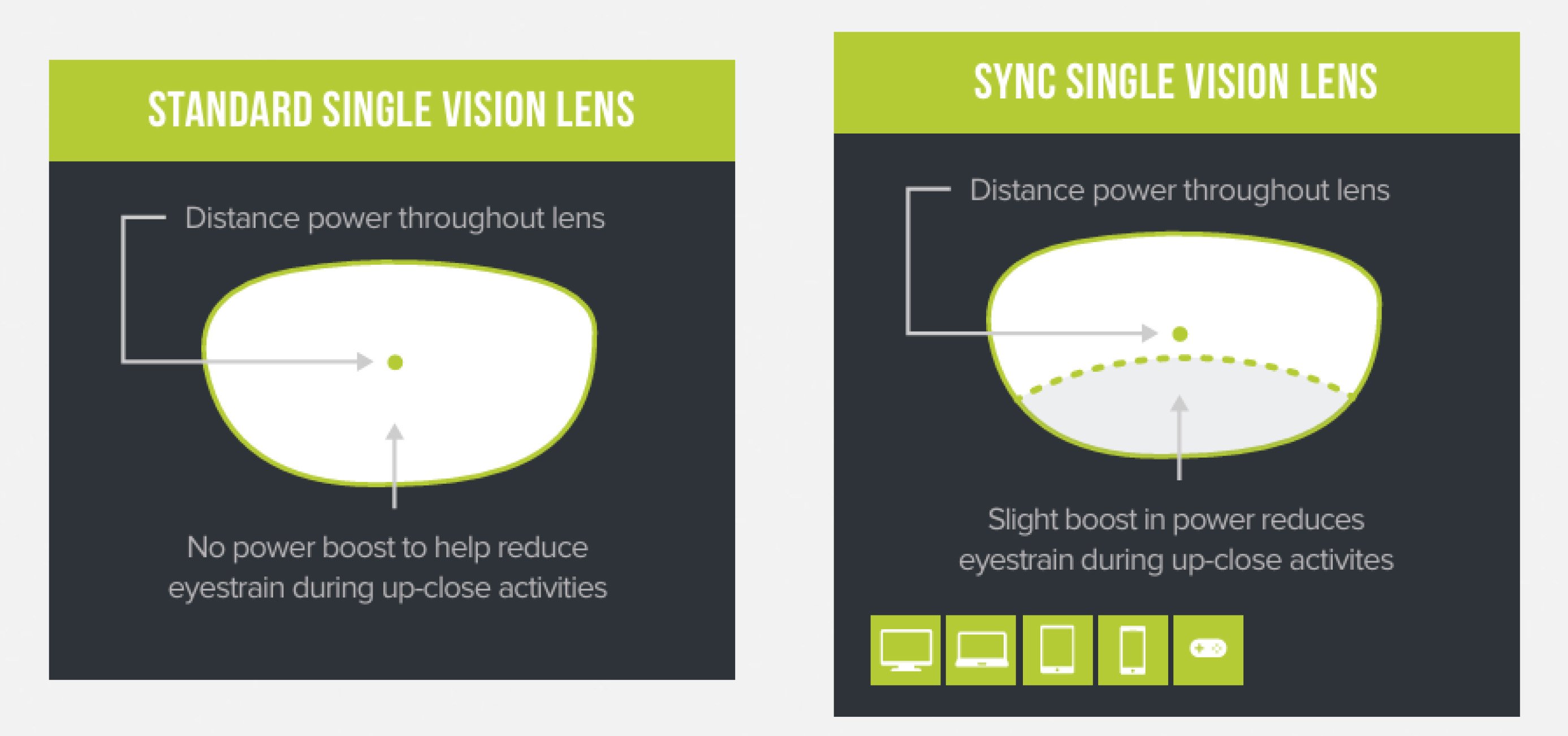Extensive screen use on computers, phones and other mobile devices has become a nearly unavoidable facet of life for most people. As a result, you likely are seeing more patients impacted by Digital Eye Strain (DES) or Computer Vision Syndrome (CVS) than ever before in your practice. And with a new season just around the corner, it’s the perfect time for a reset. Encourage your patients to take stock of their vision, and see if your patients are experiencing DES symptoms that can be alleviated with HOYA Computer and Work Lenses.
Fall is the ideal time for a refresh with upgraded daily routines: Let’s dive into how adding computer/task-specific glasses like iD WorkStyle® 3 and Sync III™ to your patients’ everyday rituals can improve their vision and quality of life.
Considerations for patients planning to add computer glasses to their daily routine
DES is more prevalent than most patients realize and can affect them in less time than most would estimate: DES affects up to 65% of adults¹ with symptoms developing in under two hours². Considering that the average Canadian workday is just under 8 hours/ is 7.5 hours long³ your patients may very well hit a slump in their day due to DES symptoms without even noticing them at first.
One way to demonstrate the impact of DES to young professionals or parents of younger patients is to use the “flipper method”: Ask the patient to hold their phone at a typical distance (8–12") while you place a +1.00 flipper in front of their eyes.
Explain to them that the flipper relaxes the internal focusing muscles. Once removed, the patient often feels the sudden return of visual effort—blinking, closing their eyes, or even pushing the phone away—clearly illustrating the strain their eyes experience. (SOURCE for this method: https://www.hoyavision.com/en-us/blog/blogs-and-article/screen-time-digital-eye-strain-and-the-sync-iii-solution/)
Explain to your patients that addressing concerns proactively with the right prescription for the task can help them avoid those unpleasant symptoms, such as tired eyes, blurred vision, dryness/irritation, and discomfort, and can even help them to increase their productivity. HOYA has the specific solutions for ECPs to offer: iD WorkStyle® 3 and Sync III™ could resolve daily vision struggles due to DES, and each are suited to different uses.
Making work glasses work for you with iD WorkStyle® 3
iD WorkStyle® 3 lenses were designed for patients who use their glasses in a traditional office or other working environment. These lenses work best as the primary pair of glasses for patients who spend most of their day in an up-close environment—whether at work or at play. They’re ideal for activities like working at a desk, reading, or focusing on detailed tasks. So whether the wearer is deep in paperwork at the office or hyper-focused on painting miniatures at home, their vision stays effortlessly sharp.
- New iD WorkStyle® 3 occupational/computer-specific lenses are designed to maximize comfort in the intermediate zone where typical workday functions are performed. Three different designs capture the nuances of office vision needs.
- iD WorkStyle® 3 shares the same technologies found in iD MyStyle® 3, designed to maximize comfort for specific work styles rather than the broader scope of lifestyles. These lenses are HOYA’s most advanced technology, honed with the needs of office workers and hobbyists in mind.
- For those over 40 years old, iD WorkStyle® 3 progressive lenses provide relief from DES symptoms and increased productivity with all of HOYA’s patented premium technologies in one design.

- iD WorkStyle® 3 is offered in three distinct design options, each engineered to address specific occupational needs:
- Space: For patients in an active office environment, focusing beyond the distance of a computer screen.
- Screen: For those mostly using intermediate distance, like those with a multi-monitor setup.
- Zoom: Designed for short distance clarity and the widest possible near area, such as for hobbies or single-screen work.
Improving comfort and increasing productivity: Exploring the benefits of Sync IIII™ lenses
Sync IIII™ lenses are designed for younger patients who experience DES, and that subset is growing. People are using digital devices now more than ever before, with an average of 8 to 10 hours a day looking at screens.¹
Eyes are working harder when using digital devices: the ciliary muscles contract, the pupils constrict, and the eyes converge. This strain results in unpleasant symptoms that can hinder your patient’s workday, school day, or other obligations.
Designed for students and young professionals, Sync III™ single-vision lenses provide comfort on digital devices that standard single vision lenses can’t offer.
- These lenses help prevent unpleasant symptoms of eye strain, including tired eyes, headaches, fluctuation of (blurred) vision, dry or itchy eyes, and light sensitivity.² With comfort and clarity, your patients will soon see the difference in the quality and productivity in their day.
- Sync IIII™ lenses provide distance power for everyday use and a ‘boost zone’ at the bottom of the lens. The boost zone is an area with an increased amount of relaxing power, which reduces eye strain during prolonged up close activities such as looking at digital screens, reading or any ‘near task’ activities. This allows your patients’ eye muscles to relax and focus more easily, helping to relieve eye strain and provide visual comfort. This alleviation can occur even after several hours looking at near distances.

Talk to your HOYA Territory Manager to learn more about offering HOYA's Computer and Work lenses to your patients today.
